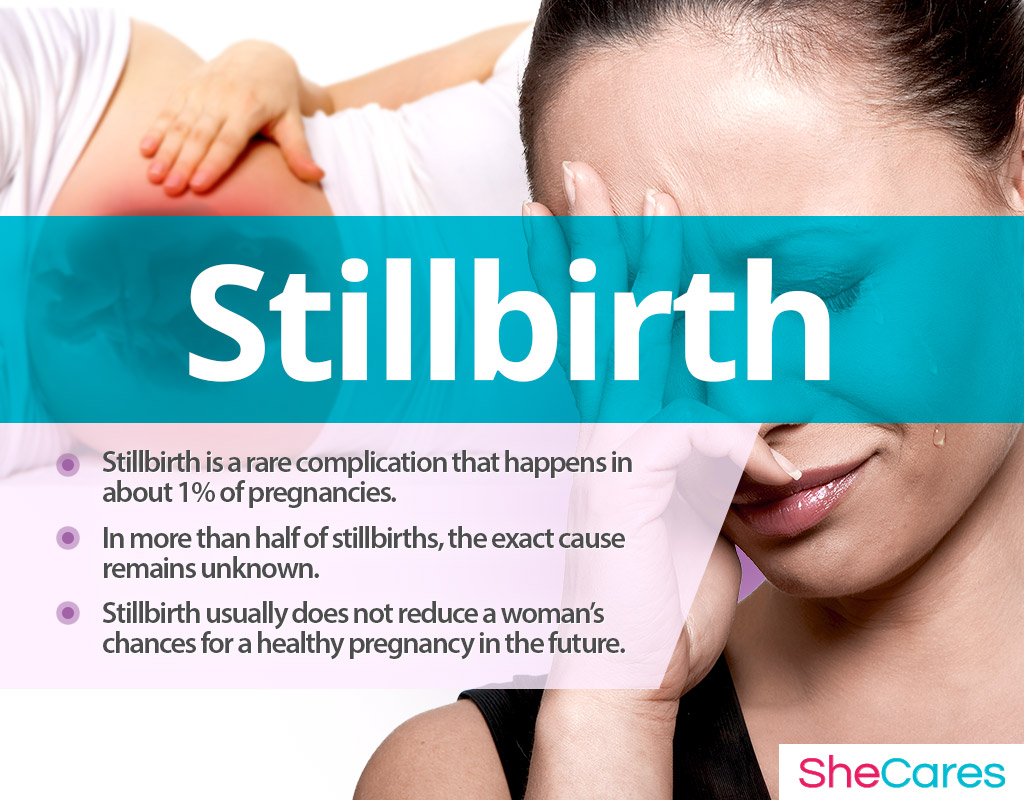What is Stillbirth?
Stillbirth is defined as fetal death that occurs after the 20th week of gestation as opposed to a miscarriage that happens from conception until the 20th week.1 The baby can die in utero as well as during delivery.
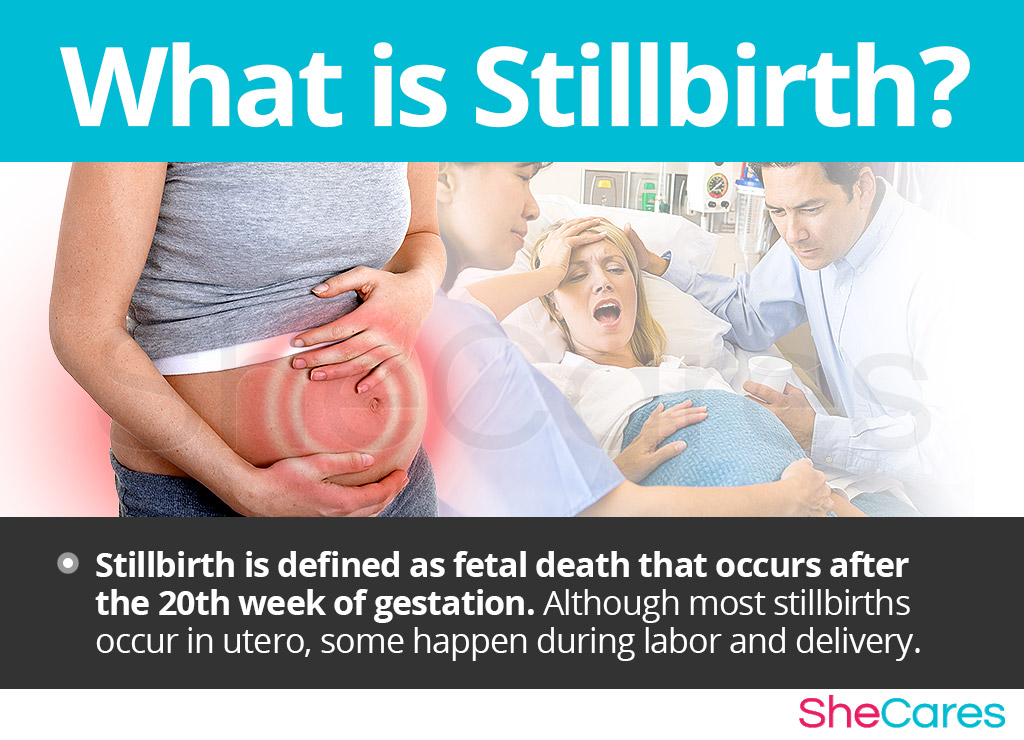
What Causes Stillbirth?
About 50% of stillbirths do not have an exact underlying cause and happen in otherwise healthy pregnancies. Certain factors, however, have been associated with an increased risk of fetal loss:
Congenital abnormalities, such as chromosomal defects
Placental problems, such as early abruption
Complications during pregnancy, labor, or delivery such as preeclampsia or rh incompatibility
Infections during pregnancy, such as UTI or some STDs
Maternal smoking, alcohol, or illicit drug use
Pre-pregnancy maternal conditions, such as high blood pressure, obesity, or diabetes
Overdue pregnancy (past 42 weeks)
Trauma to the fetus
Advanced maternal age (35+)
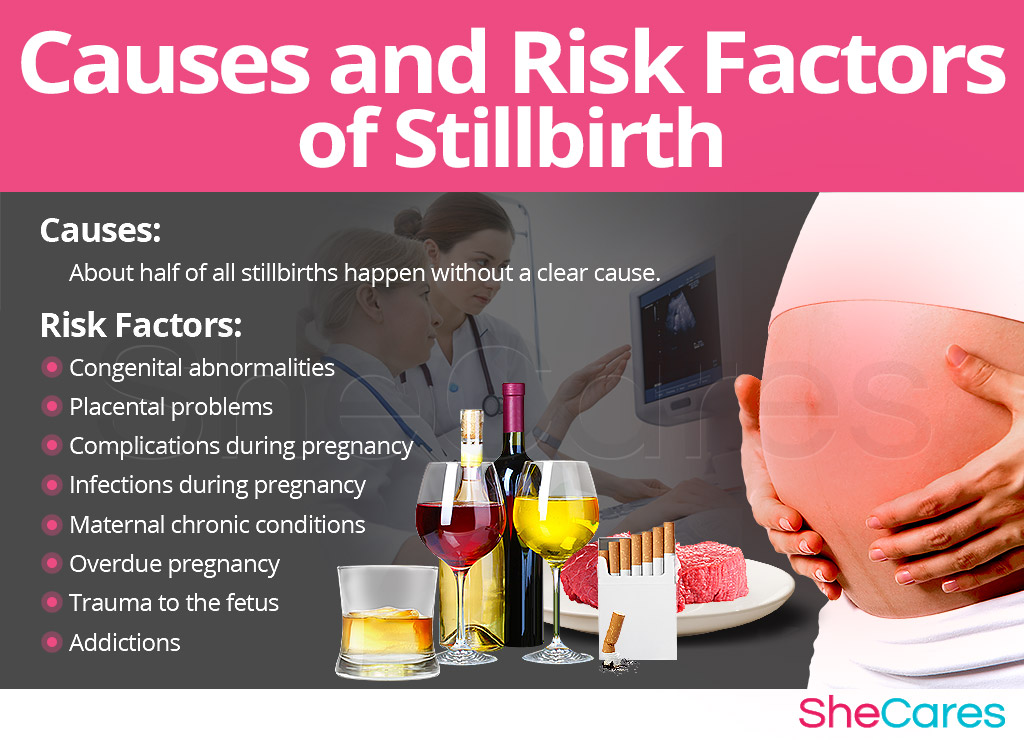
Signs and Symptoms of Stillbirth
Often time, there are no obvious warning symptoms of a stillbirth. Some women do not know their baby has died in the uterus until their next routine check-up. The following signs and symptoms are often a good indication of potential complications:
Decreased or abnormal baby movement: With the progression of pregnancy, a woman learns the patterns of her baby's movements. In many cases, she is the first one to notice any changes in its activity.
Unusual discharge or bleeding from the vagina: Any abnormal discharge, especially if it has an odor or color, can be a sign of infection or other complication, and it should be evaluated right away.
Leaking fluid from the vagina: Although it is normal to experience light leakage throughout pregnancy, more voluminous amounts of leaking fluid from the vagina might be a sign of abnormalities.
Moreover, general symptoms that might signal potential complications and should be reported right away include a fever, pain, swelling, and vision changes.
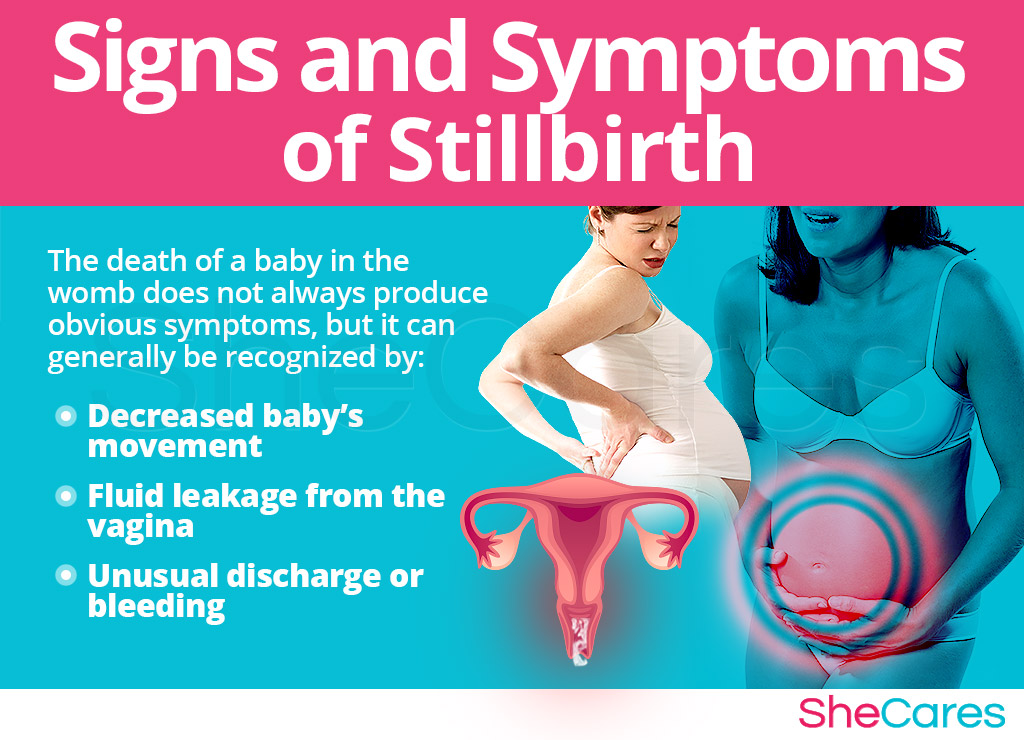
Tests for Stillbirth
There are two most common diagnostic tests used to confirm the baby's death in utero. They include:
Ultrasound. It can evaluate the baby's well-being, especially monitor its heartbeat and movement. It can also discover anatomical abnormalities that might contribute to pregnancy loss.
Fetal non-stress test. It is a non-invasive test to check how the fetal heartbeat changes with its movement in order to verify if the baby is in distress.
Effects of Stillbirth on the Mother
Generally, there are no physiological consequences of having a stillborn baby. Less than 3% of women are at risk of having a recurrent stillbirth in subsequent pregnancies, and most go on to have healthy pregnancies after suffering from a stillborn.
Naturally, losing a baby takes a great emotional toll on the aspiring parents. It is common that women, traumatized by this event, suffer from depression and have a difficult time coping with their loss. Some of them decide to delay subsequent pregnancies or not to get pregnant again.

Risk Reduction for Stillbirth
In most cases, stillbirths cannot be prevented. The risk of them happening, however, can be greatly reduced with the following practices:
Quit addictions to cigarettes, alcohol, and illicit drugs.
Limit your alcohol intake during pregnancy.
Prevent infections by avoiding eating raw meat, raw fish, and unpasteurized milk products.
Do not cleaning cat's litter box while you are pregnant.
Reach a healthy weight prior to getting pregnant.
Control your pre-existing healthy conditions prior to conceiving.
Have frequent check-ups to carefully monitor for signs and symptoms of potential abnormalities.
Treatment and Management of Stillbirth
Delivery
Treatment depends on when stillbirth occurs. If the baby dies in the womb, it might be necessary to deliver the baby by inducing labor or performing a C-section. Sometimes, however, a woman prefers to naturally go into labor, which usually happens two to three weeks after stillbirth.
Unless there is a need for an immediate delivery, you will have time to prepare yourself and make important decisions regarding aftercare. The hospital staff will help you create an environment, such a private room, in which you feel comfortable and at peace.
You will be asked if you would like to hold your baby for a while, name him or her, and take photographs. But remember that every woman copes with stillbirth differently, and you should not force yourself to doing something that makes you feel uneasy.
Post-delivery Care
Autopsy
Even though about half of all stillbirths do not have a clear cause, it might be beneficial to perform an autopsy and genetic testing on the baby after delivery. These procedures attempt to determine the cause of death. Knowing why stillbirth occurred may help a woman and her doctor decrease the risk of it happening in subsequent pregnancies. It may also bring some closure to any lingering questions an aspiring mother might have.
Maternal Tests
The possible cause of your baby's death might also be determined through your physical exam and various laboratory testings, such as blood tests and cervical swabs.
Therapy
Losing your baby is undeniably a traumatic experience, and many women reach out to mental health specialists to help them go through this period. Depression, anger, or guilt are natural when coping with the death of your child. So, it is important that, besides therapy, you surround yourself with family and friends whom you can lean on.
You might also find comfort in one of the stillbirth societies that operate around the world, uniting women who have also lost their babies and actively support one another in dealing with grief.
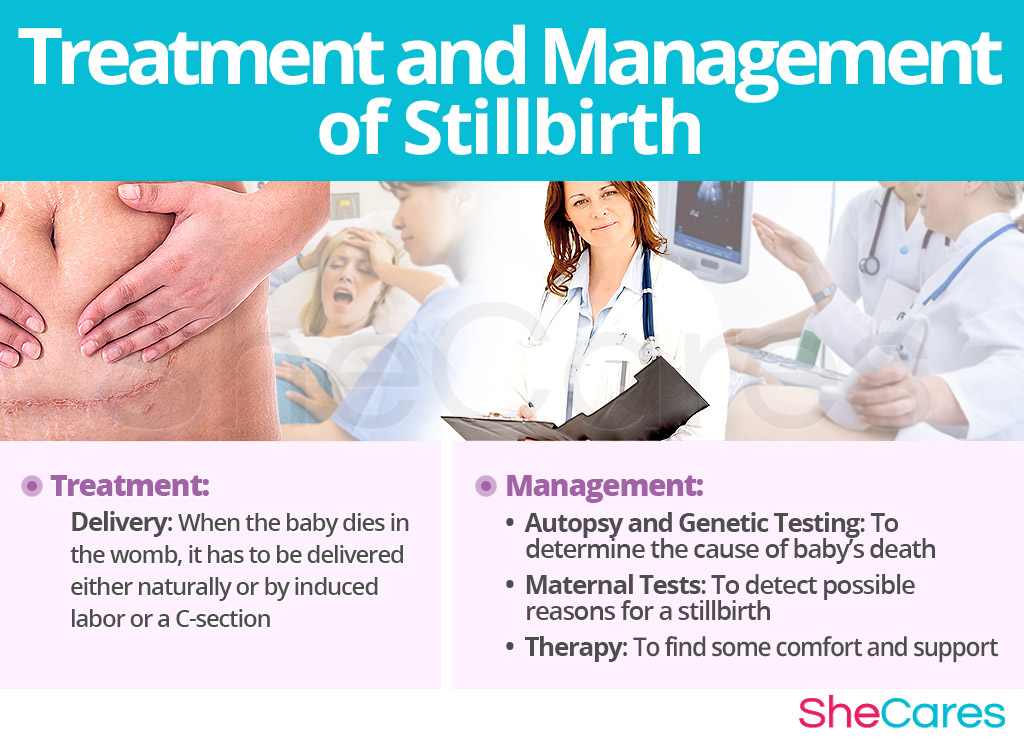
Key Takeaways
Coping with stillbirth is a very personal and individual process. Some women recover quickly, while others take longer to come to terms with their loss. When the time is right, you and your partner might consider trying to conceive again. Getting pregnant after stillbirth and having a healthy and safe pregnancy is possible but requires careful planning and monitoring.
Sources
- BioMed Central. (2015). Mothers' accounts of their stillbirth experiences and of their subsequent relationships with their living infant: an interpretative phenomenological analysis. Retrieved January 29, 2018 from https://www.ncbi.nlm.nih.gov/pmc/articles/PMC4604712/
- CDC. (2017). Facts about Stillbirth. Retrieved January 29, 2018 from https://www.cdc.gov/ncbddd/stillbirth/facts.html
- Facchinetti, F. et al. (2010). Stillbirth: Understanding and Management. Retrieved January 29, 2018 from https://books.google.com.pe/books?id=OqDSBQAAQBAJ&printsec=frontcover#v=onepage&q&f=false
- Medline Plus. (2017). Stillbirth. Retrieved January 29, 2018 from https://medlineplus.gov/stillbirth.html
- Social Work. (2014). Psychosocial Implications of Stillbirth for the Mother and her Family: A Crisis-Support Approach. Retrieved January 29, 2018 from https://www.ncbi.nlm.nih.gov/pmc/articles/PMC4299465/
- Spong, C. Y. (2011). Stillbirth: Prediction, Prevention, and Management. Retrieved January 29, 2018 from https://books.google.com.pe/books?id=ObE3S8444CMC&pg=PA65&lpg=PA65&dq=site:+.edu+stillbirth&source=bl&ots=06kqXGQCb2&sig=jLjk9tauQ96J_Hn9Cc7jgvfS2Po&hl=es-419&sa=X&ved=0ahUKEwjw4tatlv7YAhWGu1MKHaK4B5wQ6AEIXzAG#v=onepage&q=site%3A%20.edu%20stillbirth&f=false
- Stanford Children's Hospital. (n.d.). Stillbirth. Retrieved January 29, 2018 from http://www.stanfordchildrens.org/en/topic/default?id=stillbirth-90-P02501
- WHO. (2018). Stillbirths. Retrieved January 29, 2018 from http://www.who.int/maternal_child_adolescent/epidemiology/stillbirth/en/
- Women's Health. (2017). Pregnancy loss. Retrieved January 29, 2018 from https://www.womenshealth.gov/pregnancy/youre-pregnant-now-what/pregnancy-loss
Footnotes:
- March of Dimes. (2020). Stillbirth. Retrieved September 15, 2022 from https://www.marchofdimes.org/complications/stillbirth.aspx
